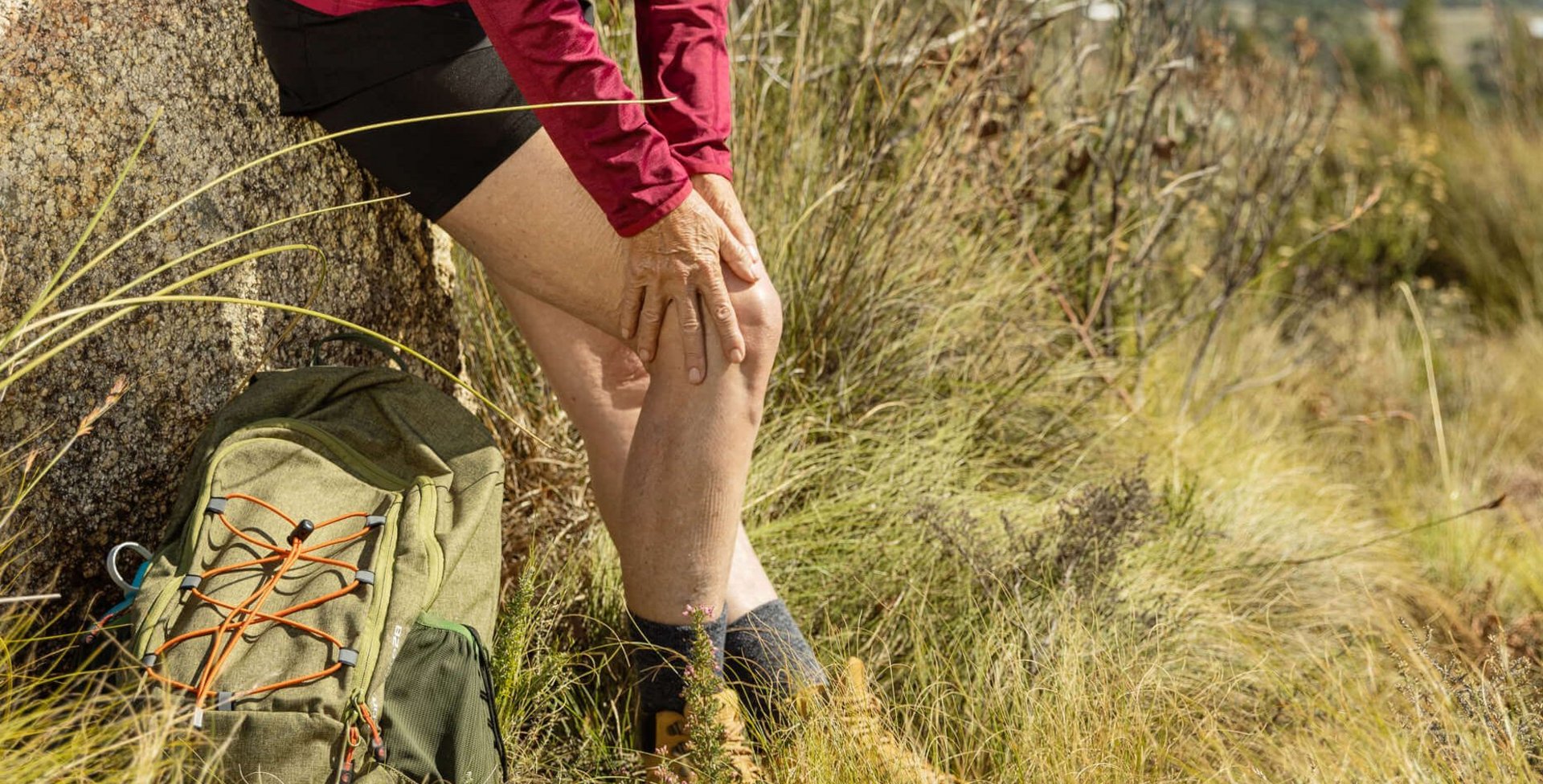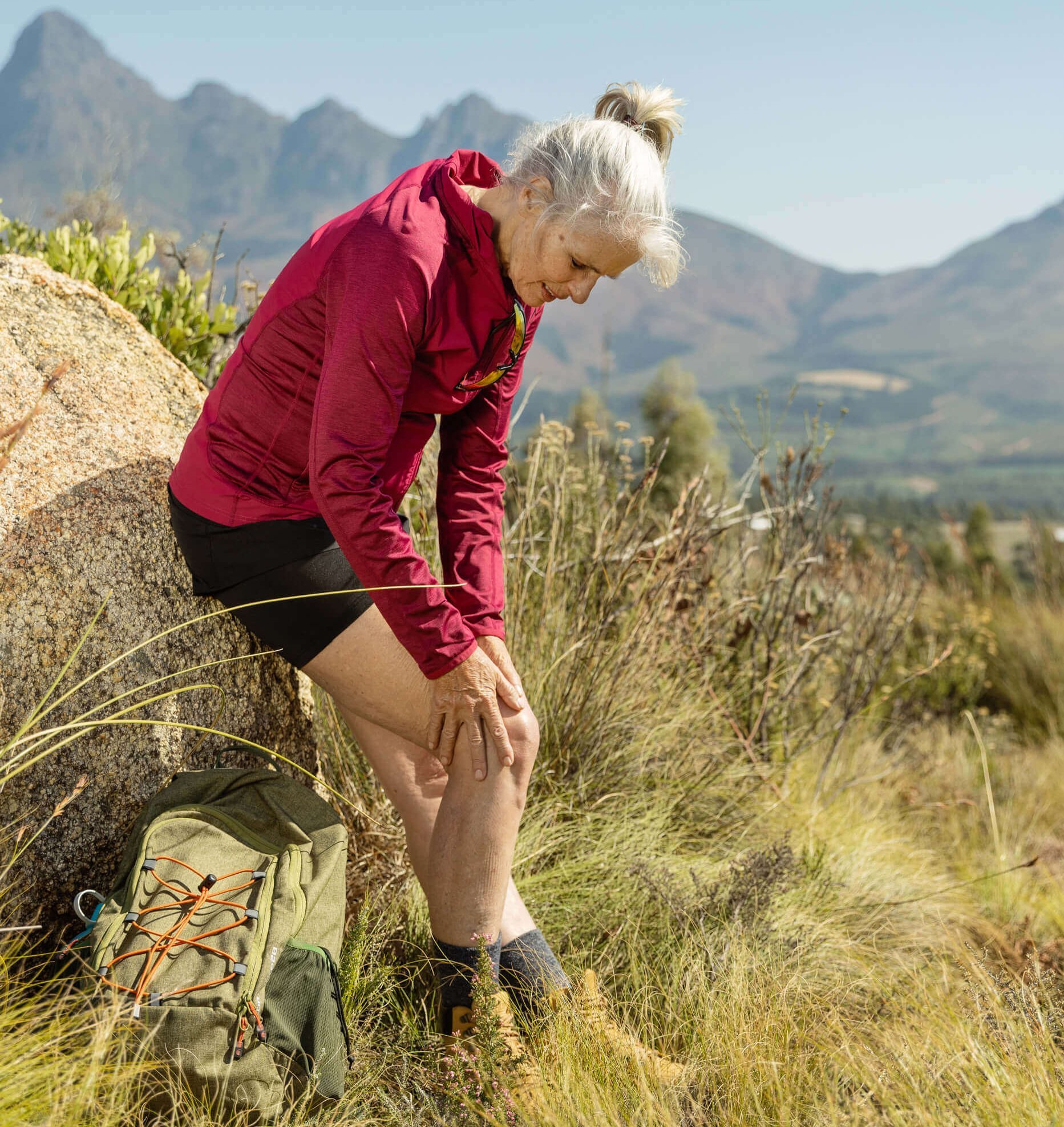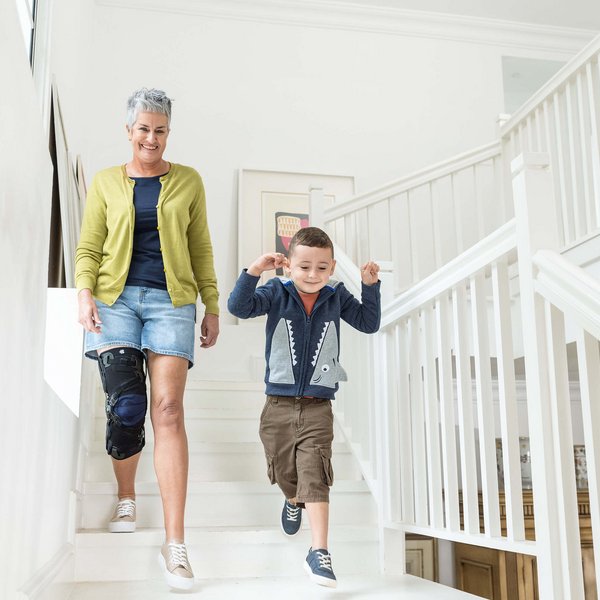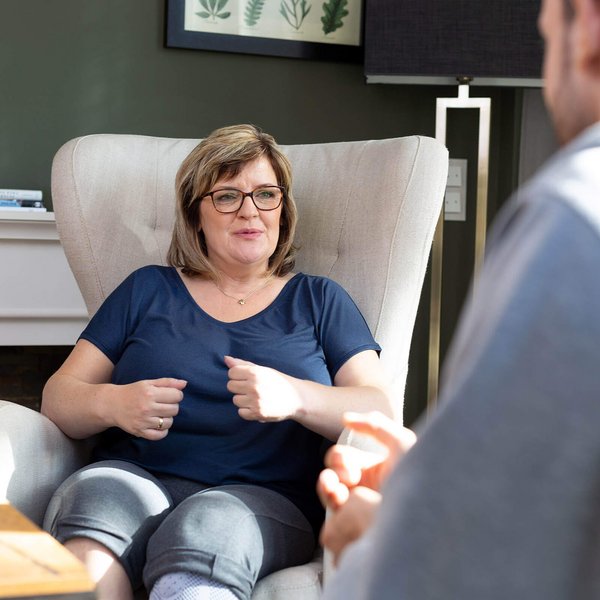
Osteoarthritis
Retropatellar osteoarthritis
Causes, symptoms, and treatment in cases of osteoarthritis of the kneecap
Osteoarthritis can occur in different parts of the knee joint. If the area behind the kneecap is affected, it is referred to as retropatellar osteoarthritis or osteoarthritis of the kneecap. This particular type of osteoarthritis of the knee usually manifests with pain at the front of the knee. It’s key to take symptoms seriously and to actively combat your problems together with a physician. In this article, we will explain what you need to bear in mind.
How are the patella and knee joint cartilage connected?

The kneecap is a disk-shaped, flat bone that is located at the front of the knee joint. The kneecap, also known as patella, is one of the connecting elements between the thigh and the lower leg. At the lower end of the femur, there is a recess, or groove, which the kneecap slides along during movement.
The knee, just like all joints, features cartilage tissue between the contact surfaces of the bones. This cartilage layer has an important protective function: it ensures that the individual bones in the joint do not rub on each other. At the back of the patella, for example, where the kneecap meets the femur, there is a cartilage layer. Various reasons can cause this cartilage layer to become soft and eventually be removed bit by bit. Then the diagnosis is: osteoarthritis of the kneecap, or retropatellar osteoarthritis in Latin.
How does osteoarthritis of the kneecap develop?
Simply put, osteoarthritis is joint wear caused by loss of cartilage. Retropatellar osteoarthritis is a rare, particular type of osteoarthritis of the knee affecting the cartilage layer behind or under the kneecap. Osteoarthritis of the kneecap can occur by itself, but other parts of the knee joint can be affected by osteoarthritis at the same time. Cartilage wear can impact the function of the entire knee, even if “only” the kneecap and the associated cartilage are affected.
The causes of retropatellar osteoarthritis vary: malformations of the kneecap or femur, for example, can result in the cartilage layer being reduced more widely. This may be the case if the kneecap and its groove on the femur don’t fit together perfectly. Misalignments, such as bandy legs, also represent an osteoarthritis risk, as do injuries like a broken kneecap.

In addition to anatomical causes, excessive strain and inappropriate mechanical stress will also lead to the cartilage tissue wearing. Years of working whilst squatting down or kneeling, as well as carrying heavy loads, subject the knee joints to a lot of pressure. Athletes are also affected, runners in particular.
And inflammation can also play a role. Weak muscles in the thigh and hip can advance osteoarthritis as well. Not least, joint wear is a condition that becomes increasingly likely with advancing age.
Retropatellar osteoarthritis: symptoms and diagnosis
Symptoms of retropatellar osteoarthritis can vary widely and they’re not always clear. That’s why only a physician can provide a definitive diagnosis. But you should start to pay attention when feeling pain at the front of the knee behind the kneecap – in particular when going downstairs, when getting up in the morning, or after rest phases. A crunching sound in the knee during movement as well as restricted movement can also indicate osteoarthritis of the kneecap. If there’s an inflammation, the joint may swell and become warm.

It’s always recommended to visit a physician early if you are experiencing problems with your knee. Your physician will ask about previous conditions and injuries, as well as your lifestyle and particular strain during everyday activities and exercise. During the physical examination, an X-ray is also usually taken. In some cases, magnetic resonance imaging (MRI) can also be beneficial to confirm the diagnosis.
Treating retropatellar osteoarthritis
Unfortunately, the following applies in general: cartilage damage caused by osteoarthritis can usually not be reversed. Osteoarthritis is therefore not curable. But this doesn’t mean there’s nothing that can be done to improve one’s own well-being. Quite the opposite: appropriate treatment developed by your physician can achieve a lot. The objective of treatment is to slow down the progression of cartilage reduction, maintain mobility, and alleviate pain.
Ensuring a healthy and balanced diet is not just recommended in cases of diagnosed osteoarthritis. If the knee is inflamed, temporary use of analgesic and anti-inflammatory drugs (in consultation with the treating physician) can be beneficial.
The problem with osteoarthritis is that – depending on its stage – exertion will be painful. This may tempt those affected to rest and largely avoid physical activities. As understandable as this may be: an indispensable part of treatment is exercise! Physiotherapy and specific knee exercises supply the remaining cartilage with nutrients and ensure the joint stays mobile.
Staying active with support
Exercise is essential when treating retropatellar osteoarthritis. Your physician and physical therapist will design a kinesiotherapy program for you that is adapted to your individual symptoms and physical requirements. In addition to targeted exercises for stretching and strengthening the thigh muscle, an active lifestyle is also key. Besides the physiotherapy, this may include adjustment of exertion, for example at work.

In most people, knee pain causes a feeling of insecurity. A support, such as the GenuTrain P3, can provide valuable help: it stabilizes the knee joint to alleviate anterior knee pain.
To do this, the individual elements of the support have various functions: pads, for example, stimulate the joint-stabilizing muscles and, at the same time, massage areas that are typically affected by pain. The Train knitted fabric exerts medical compression and intermittent compression massage during movement, which helps reduce swelling. The individually adjustable corrective strap in the pad is used to center the kneecap.
You might also be interested in this

Knee supports and orthoses provide relief and stabilization
Card subtitle
Osteoarthritis of the knee may not be curable but its progression can be slowed with the appropriate treatment.

A life worth living, despite knee pain
Card subtitle
Jana suffers from knee pain due to osteoarthritis. Find out what she does about it, and how she keeps active despite the osteoarthritis!
